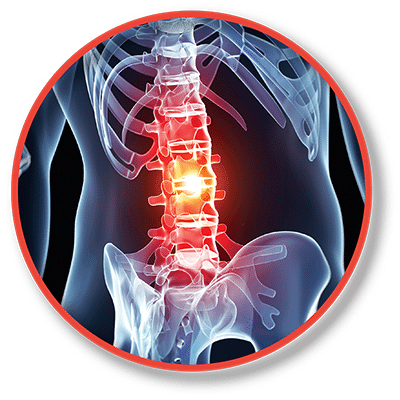OVERVIEW
Compression fractures can be benign or malignant. Fortunately, most are benign, occurring secondary to osteoporosis, a weakening condition of the spine where the bones are poorly mineralized. When bones become brittle through either demineralization or a malignant process (e.g., cancer), the vertebrae are not strong enough to support the spine.
Some patients may not feel any symptoms or back pain, while other patients may feel:
- Sudden onset of severe back pain
- Height loss
- Disability and/or deformity
- Limited spinal mobility
- Feeling more pain while standing or walking
Conservative therapy is the mainstay of treatment, including rest, pain control, physical therapy, weight loss, and use of a brace. It is important that the underlying cause of the fracture is addressed, whether through medical treatment to improve bone density or appropriate treatment of an underlying cancer. Regardless of the cause, when conservative treatment is inadequate, kyphoplasty can expedite the healing process and provide immediate relief.

KYPHOPLASTY OVERVIEW
Kyphoplasty is a minimally invasive procedure for patients who are immobilized by severely painful vertebral body compression fractures. Kyphoplasty can relieve up to 90% of the pain caused by compression fractures and can also restore height, reduce deformity, and stabilize the fracture to prevent further height loss.
PROCEDURE
The procedure can be performed with the patient under general anesthesia or conscious sedation. Local anesthesia is also administered at the surgical site. Using real-time x-ray (fluoroscopy) for guidance, two small incisions are made through which two trocars are advanced into the fractured vertebral body. Balloons are placed through the tip of the trocar and into the vertebral body. As the balloons inflate, they elevate the fracture and restore the height of the vertebral body. The balloons are then removed and the doctor uses specially designed instruments under low pressure to fill the empty cavity with polymethylmethacrylate (PMMA) cement. This cement hardens quickly providing stability and strength to the fracture.
RECOVERY
Recovery time varies depending on the patient. Some patients will feel immediate relief, while others may continue to experience pain, but it is typically significantly reduced. Patients can return to their normal daily activities but must avoid strenuous activities, such as heavy lifting, for at least six weeks after the procedure.
Our providers are nationally recognized experts in minimally invasive procedures for compression fractures of the spine.
We provide kyphoplasty procedures to patients throughout Western, MA and Northern, CT
To learn more about treatments available at New England Endovascular Center call 413-693-2852 to make an appointment.
